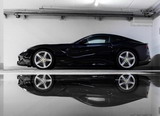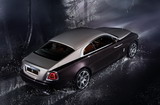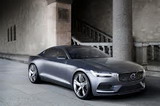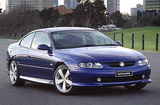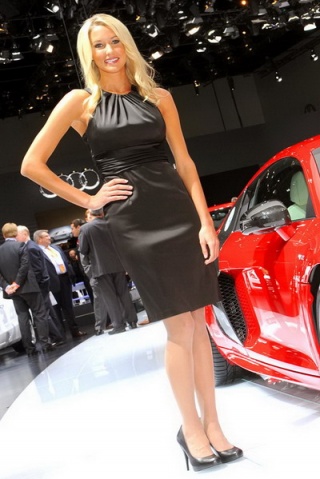LIFECar project promises to demonstrate an efficient high performance fuel cell
A wholly British partnership has unveiled plans to develop the world’s first environmentally clean sports car, powered by a fuel cell which converts hydrogen into electricity. The partnership is made up of legendary British sports car manufacturer, the Morgan Motor Company, QinetiQ, Cranfield and Oxford Universities, BOC and OSCar. The new vehicle, known as LIFECar, will be ultra quiet and its exhaust systems will produce only water vapour. It promises a clean vehicle combined with sound motoring performance and stylish good looks.
Part-funded by the Department for Trade and Industry (DTI), LIFECar is a two and half-year long project which marks a step change in vehicle power technology, producing a combination of performance, range and fuel economy that will be essential to the motoring world of the future. LIFECar will be based on the Morgan Aero Eight, and is powered by a QinetiQ-made fuel cell, which converts hydrogen – and oxygen taken from the air around it – into electrical energy. It will be clean, quiet and economic, and the only waste product from the car will be water. The car's power system will be incredibly efficient, producing significant improvements over current fuel cell prototype vehicles, with the fuel cell powering four separate electric motors, one at each drive wheel.
The key to delivering this step change in energy efficiency lies in a combination of factors, including weight reduction and a different design approach. This approach exploits opportunities across the vehicle to reduce energy losses and requirements. Regenerative braking and surplus energy will be used to charge ultra-capacitors, which will release their energy when the car is accelerating. This architecture will allow the car to have a much smaller fuel cell than is conventionally regarded as necessary: it will only be as large as is required to provide cruising speed, approximately 24 kW, as opposed to around 85kW proposed by most competitor systems.
Speaking at this year's Society of Motor Manufacturers International Business Group, where the plans were unveiled, Charles Morgan, corporate strategy director of the Morgan Motor Company and LIFECar project director, said: "This is a project which captures the imagination. LIFECar promises to combine advanced technology while retaining the best in traditional ways of designing and building cars. A sports car that is beautiful, brilliant to drive but pollution free must be a goal worth striving for."
Costing a total of £1.9m, with a mix of industry and DTI funding, the two and half year project will be broken down into the following areas of responsibility:
• BOC Developing the hydrogen refuelling plantCranfield University Systems simulation, on-board computing and control of the fuel-cell hybrid powertrain. Also responsible for analysis of the integrated design process used.
• Vehicle controller and control algorithm, together with modelling softwareMorgan Motor Company Providing the car platform and assembling the final concept carOxford University Undertaking the design and control (note C) of the electric motorsOSCar Responsible for overall system design and architectureQinetiQ Developing Proton Exchange Membrane Fuel Cell (PEMFC)
Technical Background
The car's fuel cell system operates by electrochemically combining on-board hydrogen with oxygen taken from the air outside. Although in most respects fuel cells are more like engines than batteries, to the extent that they generate energy from fuel in a tank rather than store energy, like batteries, they use electrodes (solid electrical conductors) with an electrolyte (an electrically conductive medium). When the hydrogen molecules come into contact with the negative electrodes, the molecules split into protons and electrons. The protons are then carried across the proton exchange membrane to the positive electrode of the fuel cell whilst the electrons travel around the external circuit as electricity. The molecules of the hydrogen and oxygen are combined chemically, with water as the only waste product. The only emission from the QinetiQ fuel cell will be water vapour. The electric power generated by the fuel cells powers the electric motors and turns the wheels of the vehicle.
